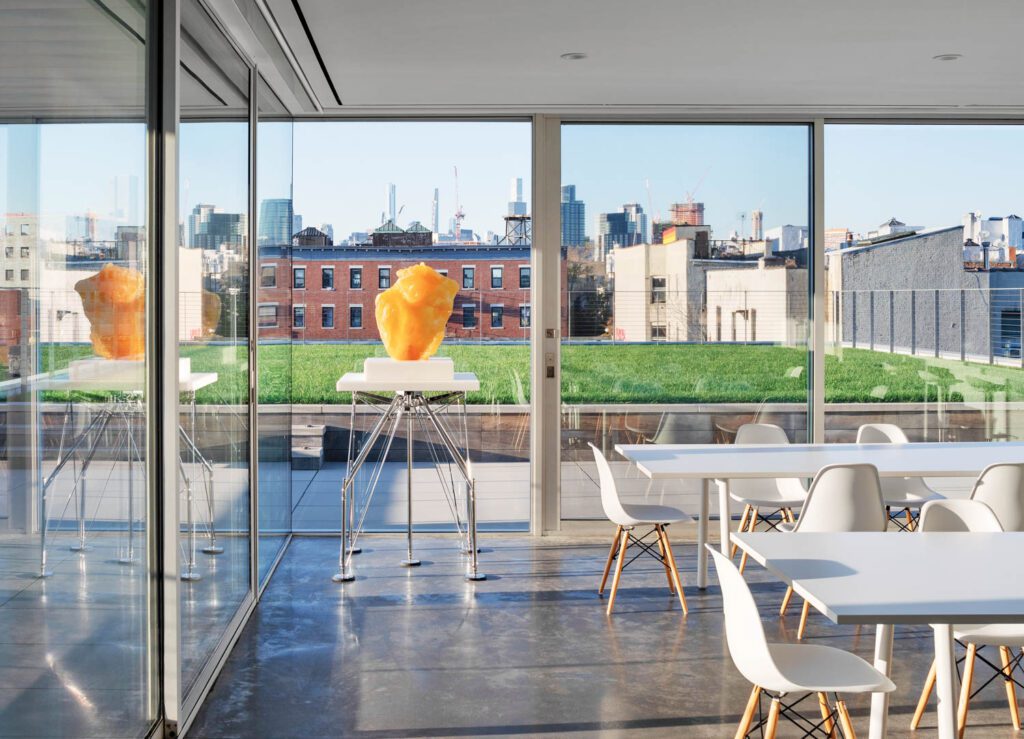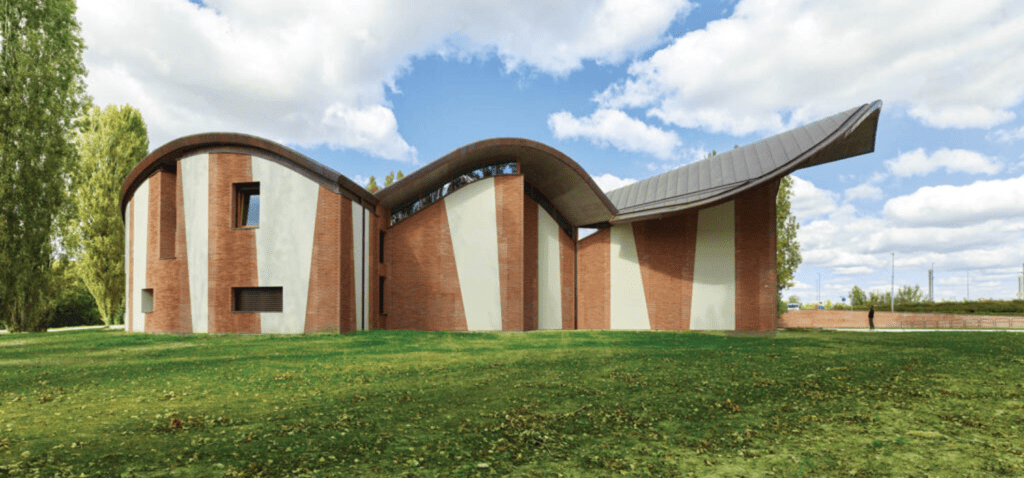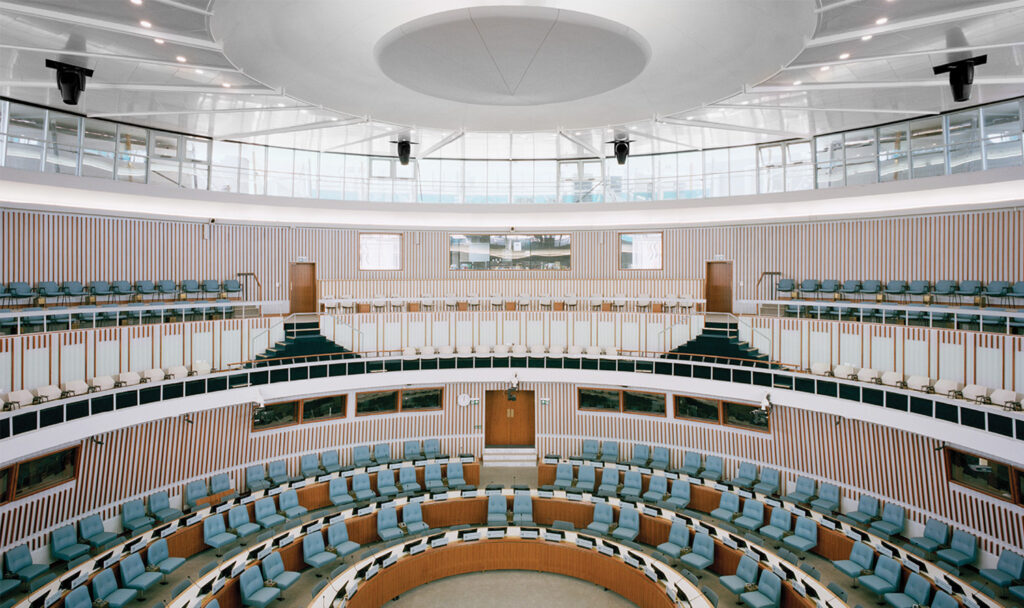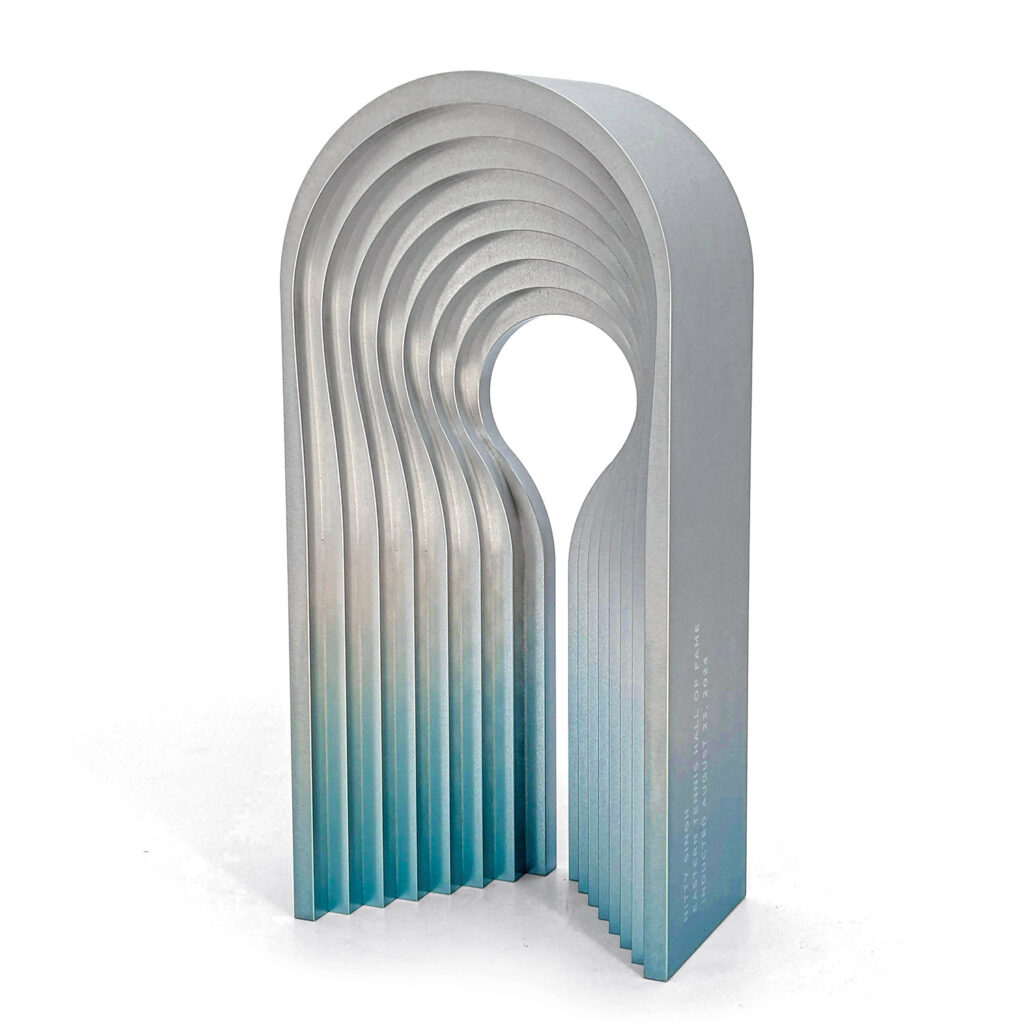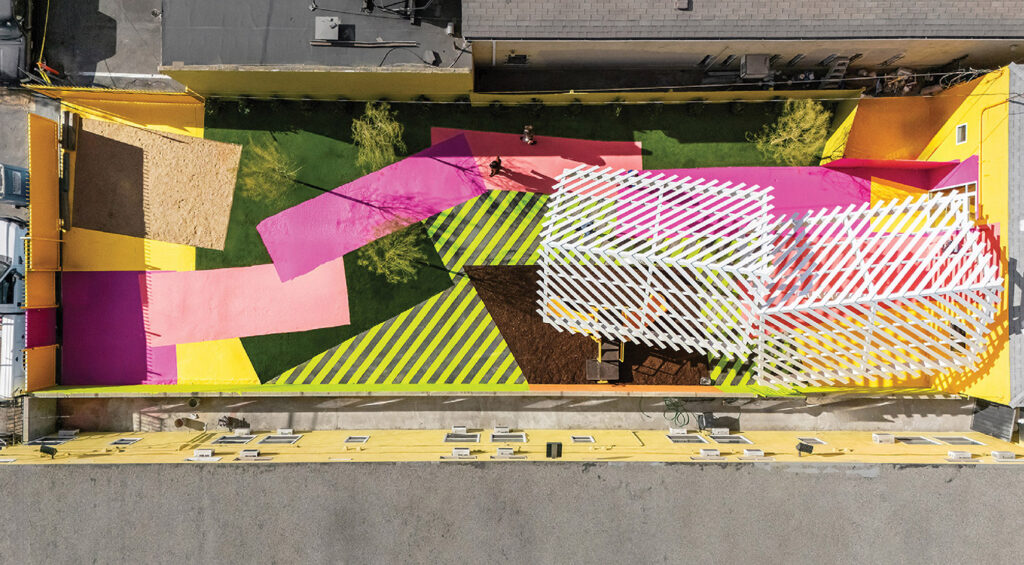
SBGA | Blengini Ghirardelli Collaborates With Valerio Berruti on the Artist’s Live/Work Space in Italy
Valerio Berruti has always wanted to be an artist. Piedmontese by birth, the 45-year-old Italian sculptor-painter is firmly rooted in his profession—when he exhibited at the 53rd Biennale di Venezia in 2009, he was one of the youngest participants—and his homeland. He is also open to experimentation and collaboration, which is revealed in two recent projects. One is at Cracco, the Michelin–star Milanese restaurant owned by famed chef Carlo Cracco. There, in the eatery’s semicircular lunette windows overlooking the city’s thriving Galleria Vittorio Emanuele II arcade, is Credere nella luce, or Believe in the light, three figures of girls, frescoed and backlit, that are not only a message of hope in this pandemic era but also evoke the magical moment of childhood, a constant theme in Berruti’s oeuvre. “This is the first time I used direct light in a work,” he says. “Believe in light and science. This is my invitation.”
Milan happens to be the home base of architect Giuseppe Blengini, cofounder of the firm SBGA | Blengini Ghirardelli and an integral collaborator in the second of Berruti’s recent projects: his home in Alba. The Piedmontese town is where Berruti was born and where he first discovered—and fell in love with—Blengini’s architectural vision, in a shop he designed there that no longer exists. Blengini was invited to dinner at Berruti’s house at the time, a small 18th-century deconsecrated church in nearby Verduno that the artist had converted into his residence and studio. During the evening, Blengini, who’s also passionately Piedmontese, noticed a detail: a window that connected the atelier and the former sacristy. And that—the perfect demarcation, clear but not too much, between intimate space and working space—was the jumping off point for the new home and atelier he would build in Alba for Berruti and his family.

Unique and complex, the resulting 5,000-square-foot structure is the product of four years of close four-handed work, a dialogue made up of flying notes, sketches drawn on restaurant napkins, and phone calls between artist and architect when Blengini traveled around the world to his firm’s other construction sites. “For this project, Valerio was the client and my assistant at the same time,” Blengini recalls smiling. Indeed, Berruti was on-site every day, following the group of local artisans and construction step by step. The 5-acre site itself was chosen for its peaceful and panoramic qualities—vineyards rising toward the house, fields of meadows all around, the hills of Alba stretching into the distance. These aspects dictated the basic lines of the residence, the orientation of its spaces, and the openings to the outside. In fact, its stepped, three-story form “recalls the terraced hills ringing the Piedmont region,” Blengini notes. The roof folds its pitches like origami to create an observatory terrace.
Part of the need for a new home was Berruti’s growing family. “With the birth of our two children, Nina and Zeno, we had to change from the church residence.” (His drawings, paintings, and sculptures, by the way, reproduce images essentially from his everyday life and family affections.) It encompasses three bedrooms and three bathrooms across its three levels and is better separated yet still connected to Berruti’s studio, thanks to Blengini’s thoughtful plan. “My years of training have taught me to dare, not to fear obstacles, and rather find solutions without preconceptions,” the architect says. Berruti adds, “Living and working in contiguous spaces offers great advantages. If I happen to wake up at night pushed by a new idea and the desire to make something happen, going down to my atelier is easy. It also applies to the time I dedicate to my children, since proximity allows me to be with them more easily.”

Materials throughout—local sandstone, concrete, oak—are pure and honest, in step with the natural mediums Berruti employs in his artwork—jute, steel plate, plaster. “With the same cement the mixers produced for the concrete, I created panels to cover the wall that leads from my atelier to our home,” the artist recalls. The large, rectangular panels could be a contemporary art installation themselves. They’re gently illuminated by an asymmetrical skylight, its trapezoidal shape “recalling the geometry of the house,” the architect says, that helps naturally brighten the studio, as it’s partially below-grade. Berruti’s finished and in-progress works are peppered throughout, like Fragments, his site-specific work of 196 reinforced-concrete and fresco tiles that lines the short stairway leading from the studio to the home’s living quarters.
There, the dominant material changes from cast on-site concrete to oak, all of which came from a single batch. It composes the flooring, paneling, and furnishings—the latter, Blengini says, “99 percent of which was designed by Valerio and me.” These include the stools along the kitchen island, the dining area’s oval table and pendant fixtures, the main bathroom’s built-in vanity, and the beds.
It’s all evidence of Berruti’s humanist approach—in his art and his life—that makes him open to new ideas and alliances, whether with chefs, children, or world-class musicians (last year, he and pianist Ludovico Einaudi created The Carousel in Venaria Reale together). A similar alchemy must have occurred when he met Blengini, and what materialized is a courageous architectural work. “It combines taste and needs,” the architect says, “in a decisive way.”











PRODUCT SOURCES from front
read more
Projects
Andrew Berman Architect Creates A Brooklyn Sculpture Studio Fit for Boulders
Barry X Ball’s dream was to have his entire process—from stone storage through artwork fabrication—under one roof. He found an existing two-story warehouse in nearby Greenpoint that could finally meet his needs. Sh…
Projects
Benedetta Tagliabue-EMBT Designs a Contemporary Church in Northern Italy
A growing congregation in northern Italy is blessed by San Giacomo Apostolo Church, a new complex by Benedetta Tagliabue-EMBT that’s both contemporary and contextual.
Projects
NOA* Network of Architecture Transforms a 17th-Century Monastery into a Chic Hotel and Spa
In northern Italy, a 17th-century former monastery gets an inspired transformation by NOA* Network of Architecture into the Monastero Arx Vivendi hotel and spa.
recent stories
Projects
Inside Africa Hall: A Modernist UN Legacy Reimagined
Africa Hall, the HQ for the United Nations Economic Commission for Africa when it debuted in 1961, was recently preserved and renovated by Architectus.
Projects
Win Big With The Eastern Tennis Hall Of Fame Trophy
Joe Doucet joins forces with other makers to design a striking, ombré-toned trophy worthy of the prestige of the Eastern Tennis Hall of Fame.
Projects
A Welcoming Center For Homeless Outreach Opens in Compton
Kadre Architects transforms a fading building into a welcoming presence in the Compton neighborhood.
